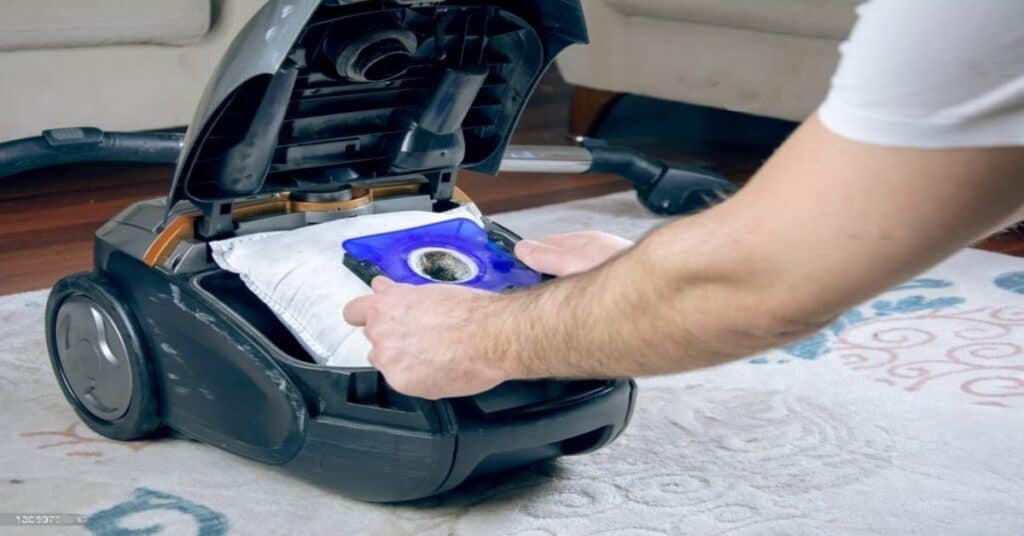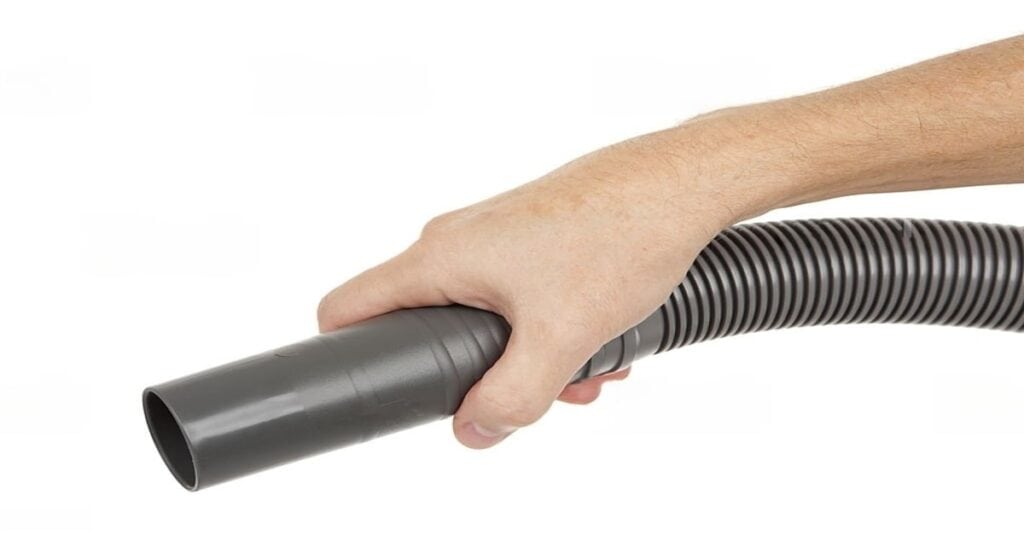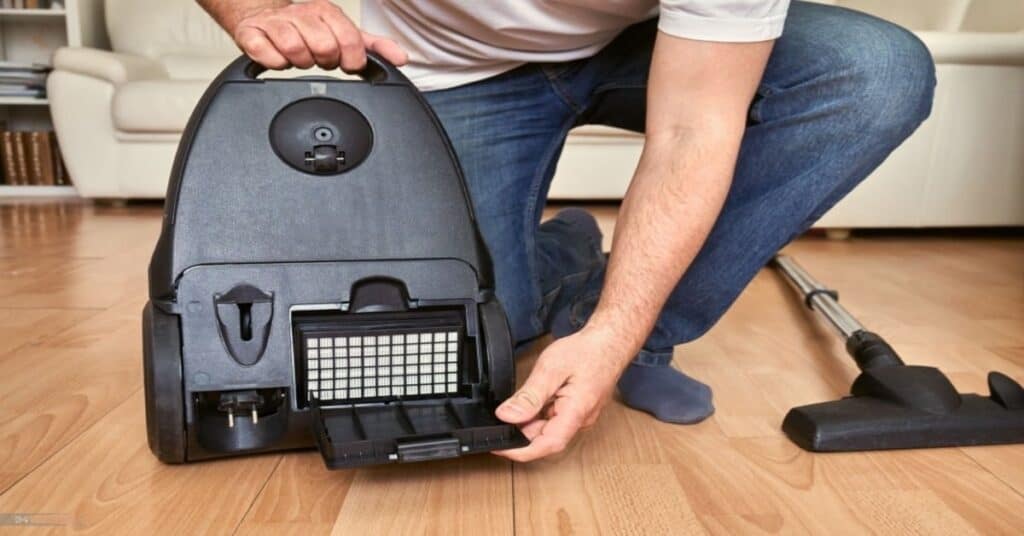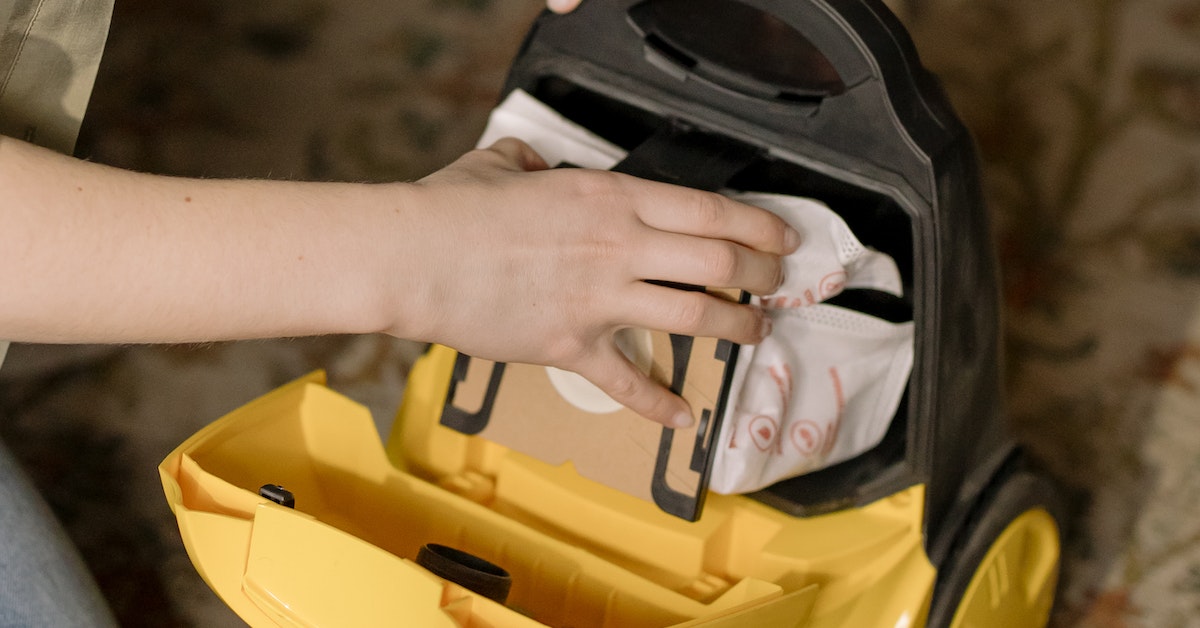Vacuum cleaners are an essential tool for keeping your home clean, but did you know that they also need to be cleaned regularly? Over time, the dirt, dust, and debris that they collect can accumulate inside the machine, reducing its suction power and even causing unpleasant odors. So the question arises:how to clean a vacuum cleaner?
Cleaning your vacuum cleaner may seem like a daunting task, but it’s actually very easy to do with the right tools and techniques. In this blog post, we will provide you with the ultimate guide on properly cleaning your vacuum cleaner. From cleaning the filters and brush roll to unclogging the hose, we’ll cover everything you need to know to keep your vacuum cleaner in top condition and ensure that it’s always ready to do its job.
- Why cleaning your vacuum cleaner is important
- Tools you need to clean your vacuum cleaner
- how to remove dust from a vacuum cleaner
- How to clean a vacuum canister
- How to clean vacuum hose
- Cleaning the filters of your vacuum cleaner
- Cleaning the brush roll of your vacuum cleaner
- how to deep clean a vacuum
- how to sanitize vacuum cleaner
- Proper maintenance of your vacuum cleaner
- When to replace parts of your vacuum cleaner
- Tips for keeping your vacuum cleaner in top condition
- Conclusion and final thoughts
Why cleaning your vacuum cleaner is important
Cleaning your vacuum cleaner is crucial for maintaining its efficiency and ensuring that it lasts longer. Over time, dust, dirt, and debris will collect inside the vacuum’s filter and dustbin, which can cause clogs and even stop the machine from working altogether.
If your vacuum cleaner is not cleaned regularly, the suction power will decrease, making it harder to pick up dirt and debris. This not only makes vacuuming less effective but also means that you will have to spend more time and effort to clean your floors properly.
Moreover, a dirty vacuum cleaner can also lead to poor air quality in your home. When you vacuum, the machine sucks in dust and other allergens, which get trapped inside the filter. If the filter is not cleaned regularly, these particles will be expelled back into the air, causing allergies and other respiratory issues.
Ultimately, cleaning your vacuum cleaner is not only important for its longevity but also for your health and well-being. By regularly cleaning your vacuum, you can ensure that it operates at maximum efficiency and provides the cleanest possible air for your home.
Tools you need to clean your vacuum cleaner
Cleaning your vacuum cleaner is an important task to maintain its performance and lifespan. To properly clean your vacuum cleaner, you will need certain tools. The first and most important tool is your vacuum cleaner’s owner’s manual.
This manual will provide you with specific instructions on how to disassemble and clean your vacuum cleaner. If you no longer have the manual, you can typically find it online by searching for the model number of your vacuum cleaner.
Another important tool to have is a clean, damp cloth. This will be used to wipe down the exterior of the vacuum cleaner, as well as any attachments or accessories. A soft-bristled brush or toothbrush is also useful for cleaning small crevices and hard-to-reach areas. You may also need a screwdriver or pliers to help with disassembly, depending on your vacuum cleaner’s design.
For cleaning the filters, you will need a replacement filter (if your vacuum cleaner uses one) and a sink or bucket of cold water. It’s important to use cold water, as hot water can damage the filter. You may also need a mild detergent or cleaning solution, depending on the type of filter and the level of dirt and debris buildup.
Lastly, for cleaning the vacuum cleaner’s brush roll, you will need a pair of scissors or a seam ripper to cut away any tangled hair or debris. A clean, dry cloth can also be used to wipe down the brush roll and remove any remaining debris. By having these tools on hand, you will be fully prepared to properly clean your vacuum cleaner and maintain its performance for years to come.
how to remove dust from a vacuum cleaner
Cleaning the exterior of your vacuum cleaner is not only important to maintain its appearance but also to ensure that it functions properly. Here are the steps to clean the exterior of your vacuum cleaner:
1. Unplug your vacuum cleaner: Make sure your vacuum cleaner is unplugged before beginning the cleaning process.
2. Remove the attachments: Take off any attachments that are attached to your vacuum cleaner, such as the hose or brush head.
3. Wipe down the exterior: Using a damp cloth, wipe down the exterior of the vacuum cleaner to remove any dirt or debris that may have accumulated on the surface. If there are any tough stains or grime, you can use a bit of soap and water to scrub them away.
4. Clean the filters: While cleaning the exterior of your vacuum cleaner, don’t forget to clean the filters. These are responsible for trapping fine dust and dirt particles and can get clogged over time. Depending on the type of filter, you can either wash it with water or replace it entirely.
5. Clean the brush roll: The brush roll is responsible for picking up dirt and debris from carpets and can become tangled with hair and fibers. Use a pair of scissors or a brush to remove any tangled hair or debris from the brush roll.
6. Put it back together: Once you have cleaned all the parts, put everything back together and plug in your vacuum cleaner.
By following these steps, you will not only prolong the lifespan of your vacuum cleaner but also ensure that it functions properly and effectively.
How to clean a vacuum canister

Cleaning the dustbin or bag of your vacuum cleaner is an essential part of keeping it running smoothly and efficiently. A dirty canister can cause suction issues, bad odors, and even damage the motor of your vacuum. Here’s how to properly clean it:
For a bag-less vacuum:
1. Turn off and unplug the vacuum cleaner.
2. Remove the dustbin from the vacuum cleaner.
3. Empty the contents of the dustbin into a trash can.
4. Using a soft-bristled brush or cloth, wipe the inside of the dustbin to remove any remaining dirt or debris.
5. Rinse the dustbin with warm water and allow it to air dry completely before reinstalling it into the vacuum cleaner.
For a vacuum cleaner with a bag:
1. Turn off and unplug the vacuum cleaner.
2. Locate the bag compartment and open it.
3. Remove the bag from the compartment.
4. Dispose of the old bag in a trash can.
5. Using a soft-bristled brush or cloth, wipe the inside of the compartment to remove any remaining dirt or debris.
6. Insert a new bag into the compartment, making sure it is securely in place.
7. Close the compartment and make sure it is tightly sealed.
It’s important to note that the dustbin or bag should be cleaned after every use or as soon as you notice that it’s getting full. This will help to maintain the suction power of your vacuum cleaner and ensure that it lasts for years to come.
How to clean vacuum hose

To clean a vacuum hose, follow these steps:
- Unplug the vacuum cleaner and detach the hose from the main unit.
- Hold one end of the hose and run water through it to flush out any dirt or debris.
- Use a long, thin brush or a combination of a brush and cloth to clean the inside of the hose thoroughly.
- Rinse the hose again with water to remove any remaining dirt or cleaning solution.
- Hang the hose to dry completely before reattaching it to the vacuum cleaner.
Cleaning the filters of your vacuum cleaner

Cleaning the filters of your vacuum cleaner is crucial in ensuring that your vacuum cleaner continues to function effectively. Dirt and debris will eventually build up on the filters, which will cause the suction power of your vacuum cleaner to decrease. Not only that, but dirty filters can also lead to unpleasant odors and even allergies.
To clean the filters, start by removing them from your vacuum cleaner. Refer to your vacuum cleaner’s manual to determine the exact location of the filters. Once you have removed them, tap them gently to remove any loose dirt and debris. Next, use a soft-bristled brush to remove any remaining dirt and debris. Be sure to brush in the opposite direction of the airflow to ensure that all dirt is removed.
If your filters are washable, rinse them under running water until the water runs clear. Be sure to let them air-dry completely before reinserting them into your vacuum cleaner. If your filters are not washable, you can use a vacuum cleaner brush to remove any remaining dirt and debris.
Remember to clean your vacuum cleaner’s filters regularly to ensure their longevity and efficiency. It’s recommended to clean them every one or two months, depending on how often you use your vacuum cleaner. With clean filters, you can keep your home clean and fresh-smelling, and avoid any unnecessary allergies.
Cleaning the brush roll of your vacuum cleaner
Cleaning the brush roll of your vacuum cleaner is crucial in ensuring that your vacuum cleaner performs at its best. The brush roll is the rotating cylinder that picks up dirt and debris from your carpets and floors. Over time, hair, dust, and other debris can get tangled around the brush roll, causing it to become less effective or even stop working altogether.
To clean the brush roll, you’ll first need to unplug your vacuum cleaner and remove any attachments. Next, locate the brush roll and use a pair of scissors or a seam ripper to carefully cut away any tangled hair or debris. You can also use a comb or brush to remove any excess hair or debris that may be stuck to the brush roll.
Once you’ve removed all of the debris, use a damp cloth to wipe down the brush roll and remove any remaining dirt or dust. Be sure to let the brush roll dry completely before reattaching it to your vacuum cleaner.
Cleaning the brush roll of your vacuum cleaner should be done on a regular basis, ideally once a month or whenever you notice a decrease in suction power. By taking the time to properly clean your vacuum cleaner, you can ensure that it continues to perform at its best, keeping your home clean and free of dirt and debris.
how to deep clean a vacuum
- Unplug the Vacuum Cleaner: Before beginning the deep cleaning process, make sure your vacuum cleaner is completely unplugged from the power source to ensure safety.
- Disassemble the Vacuum Cleaner: Remove all attachments, including the hose, brush head, and any other detachable parts, as needed. Refer to the owner’s manual for guidance on disassembly.
- Empty the Dustbin or Replace the Bag: If your vacuum cleaner is bagless, empty the dustbin into a trash can and clean it thoroughly. If your vacuum uses bags, replace the old bag with a new one.
- Wash the Filters: Check the type of filters your vacuum cleaner uses. If they are washable, rinse them under running water until the water runs clear. Allow the filters to air-dry completely before reinserting them.
- Sanitize the Exterior: Use a suitable cleaning solution or disinfectant to wipe down the exterior of the vacuum cleaner, including the handle and high-touch areas.
- Clean the Brush Roll: Use a pair of scissors or a brush to carefully remove any tangled hair, fibers, or debris from the brush roll. Wipe down the brush roll with a damp cloth to remove any remaining dirt or dust.
- Clean the Vacuum Hose: Detach the vacuum hose and run water through it to flush out any dirt or debris. Use a long, thin brush or a combination of a brush and cloth to clean the inside of the hose thoroughly.
- Check for Blockages: Inspect all the hoses, attachments, and other parts for blockages or clogs. Use a long, thin object like a broom handle to remove any blockages.
- Let Parts Dry: Ensure that all the parts, including the filters, dustbin or bag, brush roll, and attachments, are completely dry before reassembling the vacuum cleaner.
- Reassemble the Vacuum Cleaner: Put all the cleaned and dried parts back together and reattach them to the main unit. Make sure everything is securely in place.
- Store the Vacuum Properly: After deep cleaning, store your vacuum cleaner in a cool, dry place, away from extreme temperatures or moisture.
how to sanitize vacuum cleaner
To sanitize your vacuum cleaner, wipe down the exterior with a disinfectant, clean detachable parts with soap and water, and let them air dry before reassembling.
Proper maintenance of your vacuum cleaner
Proper maintenance of your vacuum cleaner is key to ensuring its longevity and effectiveness. A well-maintained vacuum cleaner can last for many years, saving you money in the long run. Here are some tips for proper maintenance:
1. Empty the dustbin or replace the bag regularly. A full dustbin or bag reduces suction power and can cause the motor to overheat.
2. Clean the filters regularly. Dirty filters reduce suction power and can cause the motor to overheat. Some vacuums have washable filters, while others need to be replaced.
3. Check the brush roll and clean it of hair, string, and other debris. A dirty brush roll can reduce suction power and damage your carpets.
4. Check the hoses and attachments for blockages. A blockage can reduce suction power and cause the motor to overheat.
5. Store your vacuum cleaner in a clean, dry place. Moisture can damage the motor and other parts.
By following these simple maintenance tips, you can ensure that your vacuum cleaner is always in top condition and ready to tackle any mess. Remember to check your owner’s manual for specific maintenance instructions for your particular vacuum cleaner.
When to replace parts of your vacuum cleaner
Just like any other appliance, vacuum cleaners are subject to wear and tear over time. The good news is that many parts of vacuums can be replaced, giving them an extended lifespan. It’s important to know when certain parts need to be replaced to ensure that your vacuum is working at its best.
The first part that may need to be replaced is the filter. If you notice that the vacuum cleaner is producing less suction, it may be time to replace the filter. This is especially true if you have pets or allergies, as the filter is responsible for trapping dust, allergens, and other particles.
Another part that may need replacing is the brush roll. Over time, the bristles on the brush roll can become worn down or tangled with hair and debris. This can impact the efficiency of the vacuum cleaner and make it less effective at cleaning carpets and other surfaces. If you notice that the brush roll isn’t spinning as it should, it may be time to replace it.
Belts are another part of the vacuum cleaner that can wear down over time. If you notice that the vacuum cleaner isn’t picking up as much dirt or debris as it used to, it may be time to replace the belt. This can be a bit more involved than replacing a filter or brush roll, but it’s an important maintenance task to keep your vacuum working properly.
Finally, the motor of the vacuum cleaner can also wear down over time. If you notice that the vacuum is producing strange noises or isn’t working as efficiently as it used to, it may be time to consider replacing the motor. This is a big job that may require professional assistance, but it can give your vacuum a whole new lease on life.
Tips for keeping your vacuum cleaner in top condition
Regular maintenance of your vacuum cleaner is key to its longevity and optimal performance. Here are some tips for keeping your vacuum cleaner in top condition:
1. Clean the filters regularly: Most vacuum cleaners have filters that need to be cleaned or replaced periodically. Follow the manufacturer’s instructions for cleaning or replacing these filters. Neglecting to clean or replace the filters can lead to reduced suction power and clogging.
2. Check the brush roll: The brush roll in your vacuum cleaner can become tangled with hair, fibers, and other debris. Regularly check the brush roll and remove any tangled debris to ensure the brush roll continues to rotate properly.
3. Empty the dustbin or replace the bag: A full dustbin or bag can reduce the suction power of your vacuum cleaner. Empty the dustbin or replace the bag regularly to maintain optimal suction.
4. Check the hoses and attachments: Make sure that the hoses and attachments are free of debris and not clogged. Use a long, thin object like a broom handle to remove any blockages.
5. Store your vacuum cleaner properly: After use, store your vacuum cleaner in a cool, dry place. Do not expose it to extreme temperatures or moisture.
By following these tips, you can ensure that your vacuum cleaner remains in top condition and provides optimal performance for years to come.
Conclusion and final thoughts
In conclusion, cleaning your vacuum cleaner regularly is important not only for hygiene purposes but also to ensure its longevity and efficiency. By following the steps outlined in this guide, you can easily clean your vacuum cleaner and maintain its performance for years to come.
Remember to regularly empty the dustbin or replace the bag, clean the filters, check for blockages, and clean the brush roll. It’s also important to clean the exterior of the vacuum cleaner to keep it looking new.
By properly maintaining your vacuum cleaner, you’ll be able to save money in the long run and avoid having to replace it frequently. Plus, having a clean and efficient vacuum cleaner will make cleaning your home a breeze.
Thank you for reading our ultimate guide on how to properly clean and maintain your vacuum cleaner! We hope you found these tips and techniques helpful in keeping your vacuum in top condition and ensuring it provides efficient cleaning for your home.
If you have any questions or need further assistance, feel free to reach out to us. We’re here to help you make the most of your cleaning experience. Keep your home clean and your vacuum cleaner well-maintained, and you’ll enjoy a cleaner and healthier living space.
For more helpful articles and tips on home cleaning, maintenance, and other topics, be sure to explore our website. Happy cleaning!

Meet Anup- Your Vacuum Cleaning Expert! With unwavering dedication as a micro niche blogger, I explore the world of vacuum cleaners. Count on honest reviews, insider tips, and comprehensive guides here. Together, we’ll banish dirt and find the perfect cleaning superhero for your home. Join the adventure now and revolutionize your cleaning routine! Subscribe for the latest updates straight to your inbox. Happy vacuuming!
